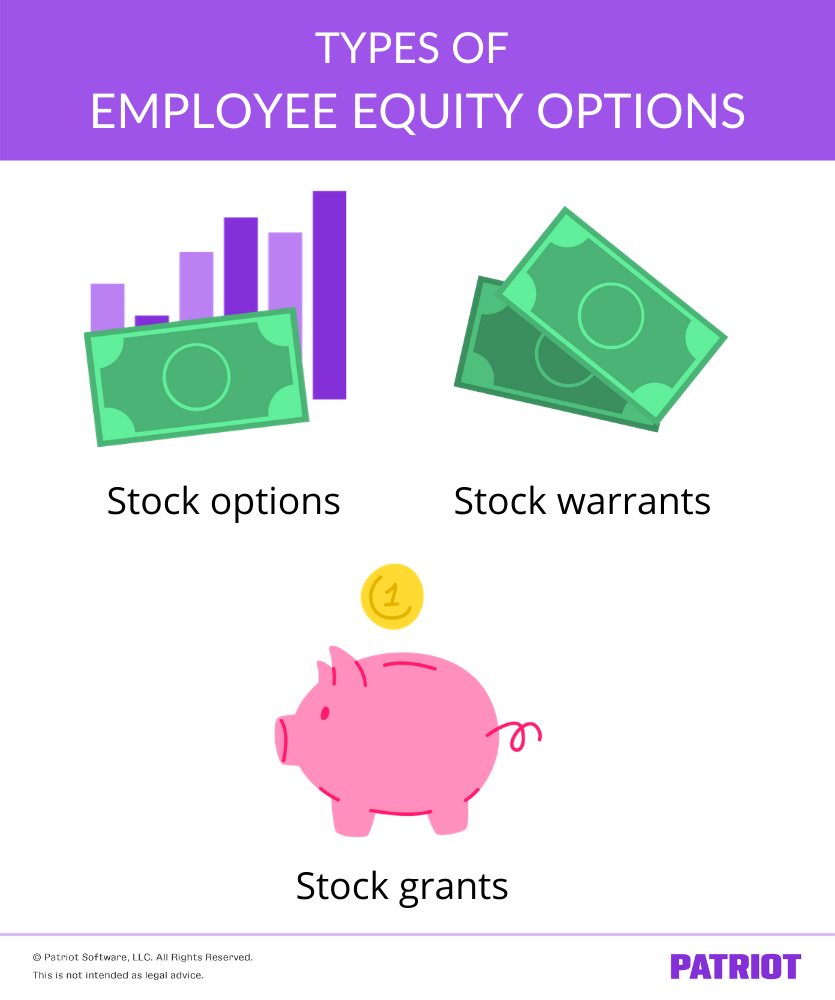When you pursue your passion and start your business, you may not necessarily have the budget to hire your dream team right away. Because of a small business budget, some startup owners use employee equity as an incentive. Read on to learn the ins and outs of employee equity and what options you can offer employees.
What is employee equity?
Employee equity includes the different types of equity or stock issued to employees. Many startups offer this to employees as compensation while first launching their business. However, a company may also opt to offer employee equity to employees later on.
As mentioned, employee equity can incentivize workers to make a long-term investment in your business and its future. And sometimes, the longer an employee stays on board, the more they will gain.
There are two types of stock you should be aware of when it comes to employee equity:
- Common stock
- Preferred stock
Common stock is typically given to employees. It’s a small portion of ownership in the company that pays dividends when the business makes money. Employers can distribute common stock to employees via stock options.
Preferred stock is similar to common stock. With preferred stock, dividends are paid first to preferred stockholders (e.g., investors) and then to common stockholders. In short, preferred stockholders are first in line for a payout.
Equity options for employees
Now that you have some background information about employee equity, let’s talk about the equity options you can offer employees. Some options include:
- Stock options
- Stock warrants
- Stock grants
Stock options
Stock options are the option to purchase or sell stock (or shares) in the company at a fixed price during a period. Employers can offer stock options to employees at a better rate than other investors. Stock options can be either common or preferred stock.
To give out employee equity in the form of a stock option, you need to create a stock option plan. Your plan should specify the price of the stock and the time period where employees can exercise their stock options (vesting and expiration dates). An employee cannot exercise their options before the vesting date or after the date it expires. This time period varies from employer to employer.
Stock options generally expire in less than a year. In some cases, employers extend them two or three years.
Stock options for employees tend to be more flexible and can bring greater value to your employees.
Stock warrants
Stock warrants are very similar to stock options but have one significant difference. Warrants give your employees the right to buy stocks from your business at a certain price. With stock options, you give your employees the option to purchase stocks from you. Through warrants, an employee has to pay for the right to purchase the stock. Stock warrants are typically common stock.
Warrants are only good for a fixed amount of time. And, they aren’t worth anything after they expire. Unlike stock options, warrants are good for a number of years. Some stock warrants are good for over 10 or even 15 years.
Stock grants
A stock grant is the amount of stocks an employer grants to an employee as a form of compensation. They are designed to keep employees working for your business for a set period of time. Like stock warrants, stock grants are usually common stock.
For example, a business may grant a new worker 50 shares of stock that vest over three years. This means the employee must work for the company for three years before they can retain the stock.
Stock grants are valuable because the employee did not purchase them in the first place, making it an attractive option to employees.

Establishing vesting terms
Regardless of what option you choose to go with, you should establish vesting terms and lay them out for your employees. Vesting refers to ownership. When something is fully vested, that means an individual has complete ownership of it.
Your vesting terms include how long an employee has to work for you before they can collect their equity. It essentially outlines when an employee gains the rights to exercise the stock. Creating terms helps protect your business and also clarifies equity benefits with employees.
In your terms, be sure to outline:
- A vesting date (first date an employee can obtain their stocks)
- The vesting period (time period before an employee can fully exercise their stock)
- The portion of stocks employees can receive, if applicable (e.g., receive 1/20 of stock every quarter)
There is no one-size-fits-all when it comes to vestings terms. Again, they depend on the business.
Many employers set a cliff period for new employees where employees do not receive any stocks during the first year of employment. A cliff period allows employers to ensure that the newly onboarded employees are committed to the company and are not just there for the stock incentive.
Steps for offering employee equity
Before you opt to offer employee equity to your team, weigh the pros and cons. If you decide to move forward with offering equity to employees, follow the steps below to ensure the process goes smoothly:
- Hire a top-notch team (if you haven’t already)
- Research equity options and compare to other companies
- Determine which equity option you will offer
- Set your vesting schedule and terms
- Set an expiration timeline
- Decide if employees can exercise stock early
- Include your terms in your employee handbook
Need an easy way to record business transactions? Patriot’s online accounting software lets you efficiently manage your expenses and income. And, we offer free, USA-based support. What are you waiting for? Try it for free today!
Have questions, comments, or concerns about this post? Like us on Facebook, and let’s get talking!
This is not intended as legal advice; for more information, please click here.



